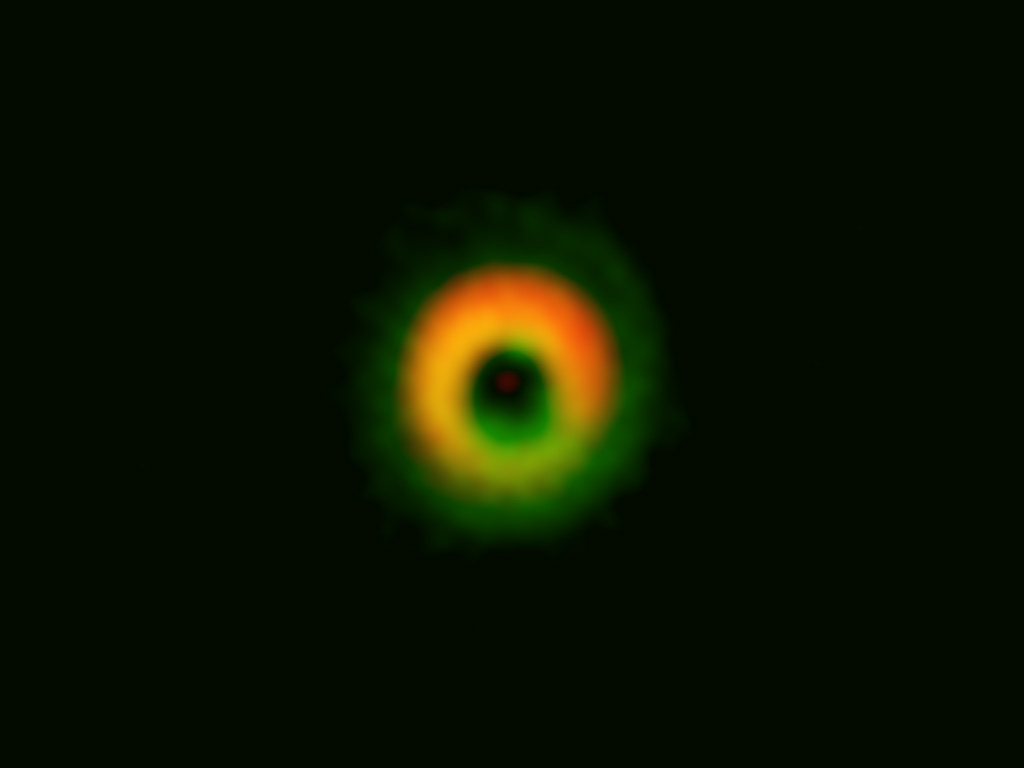More than 1000 extrasolar planets have been discovered until now, and it is widely recognized that the Sun is not the only star which has planets. In the research of extrasolar planets, astronomers have found a wide variety of planets such as Jupiter-like gaseous giant planets circling around central stars in a much smaller orbit than that of the Mercury, and planets that have a very large orbit far beyond the Neptune’s orbit. While such a diverse range of extrasolar planets have been discovered, the formation process of planets is yet to be well understood. This is one of the top priority issues in modern astronomy and an increasing number of observations have been conducted to explore the planet forming region around young stars. A baby star is surrounded by a ring of dust [1] and gas, which would be the component material of planets. Recent near-infrared [2] observations with the NAOJ Subaru Telescope revealed that protoplanetary disks have structures that are far more complex than we expected. Spiral or gap structures are thought to be associated with hidden planets in the disk [3]. However, it is impossible to measure the amount of dust and gas in the densest part of the disk by near-infrared observations. Since near-infrared light is easily absorbed or scattered by a large amount of dust, it isn’t suitable for observing the innermost part of the dense region of the disk. Then, the key to the solution will be millimeter and submillimeter wave [4], which can be observed with ALMA. Millimeter/submillimeter wave has longer wavelength than near-infrared light and is poorly absorbed by dust, which enables astronomers to peer into the inner part of the disk. Low spatial resolution was a weak point in millimeter/submillimeter observations, but it is now greatly improved by ALMA.   Figure 1 (left). Dust and gas disk around HD142527. The dust and gas distributions observed by ALMA are shown in red and green, respectively. Near-infrared image taken by the NAOJ Subaru Telescope is shown in blue. The image clearly shows that the dust is concentrated in the northern (upper) part of the disk. Credit: ALMA (ESO/NAOJ/NRAO), NAOJ, Fukagawa et al. Figure 2 (right). Disk around HD142527 observed by ALMA. The color assignment is the same as Figure 1. Credit: ALMA (ESO/NAOJ/NRAO), Fukagawa et al. For a little more insight into the project see this:http://alma.mtk.nao.ac.jp/e/news/pressrelease/20140117alma_discovers_a_formation_site_of_a_giant_planetary_system.html |
